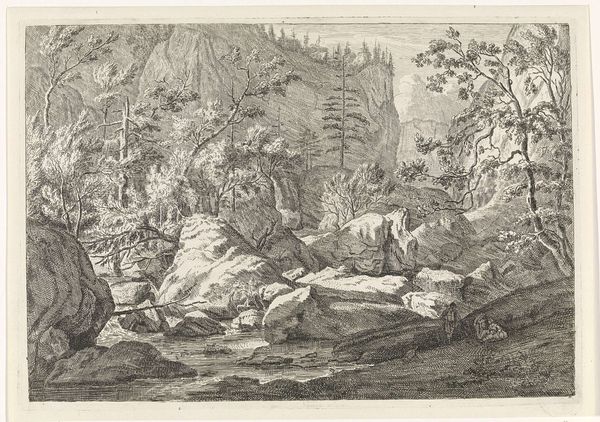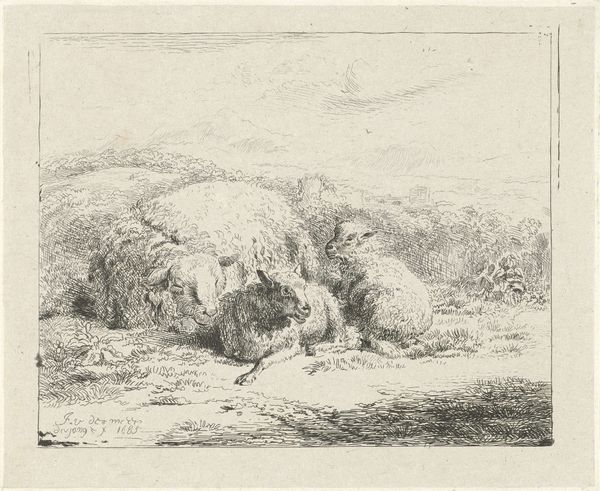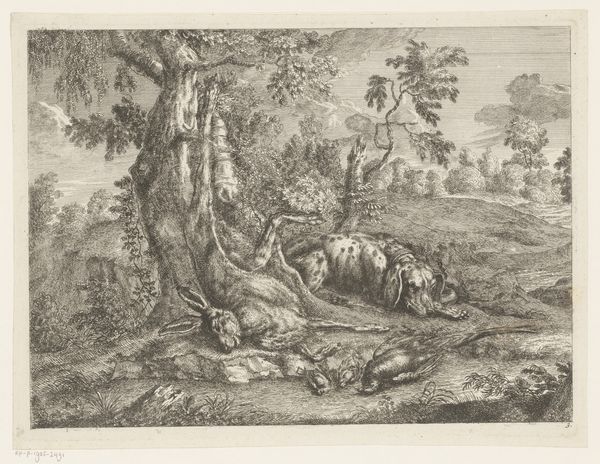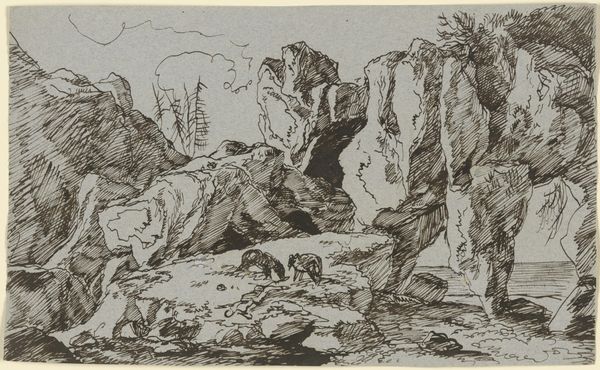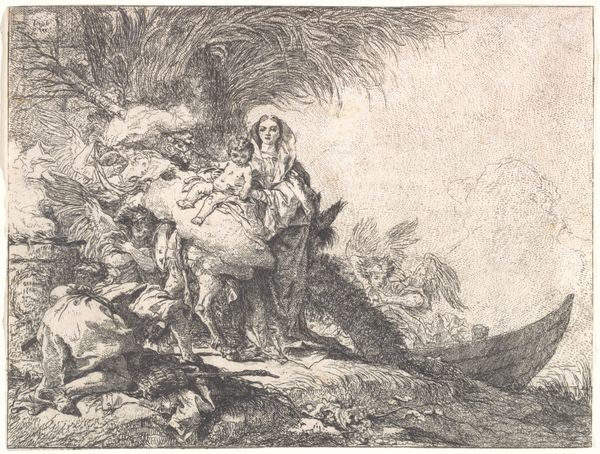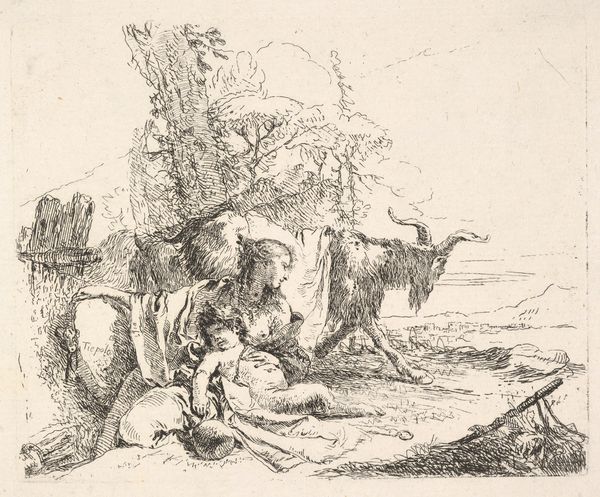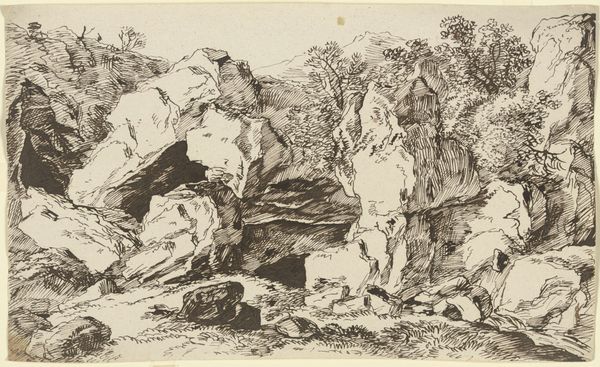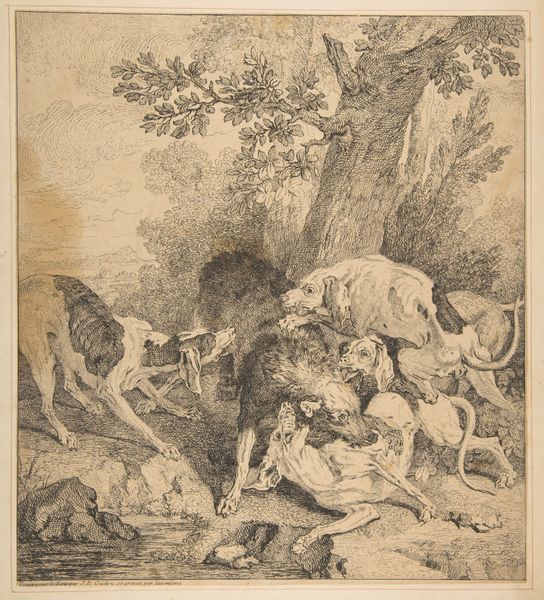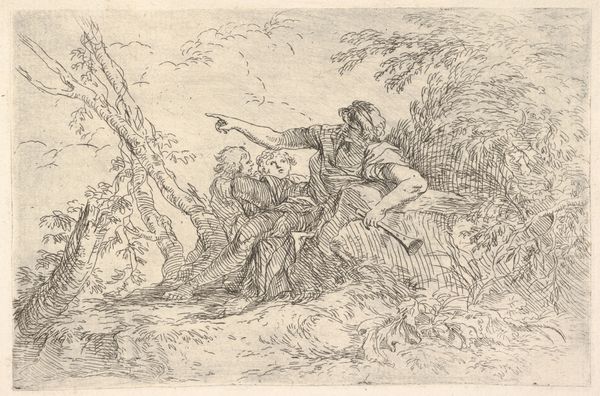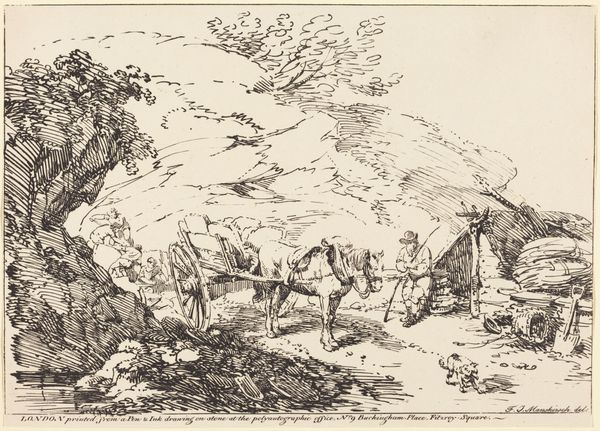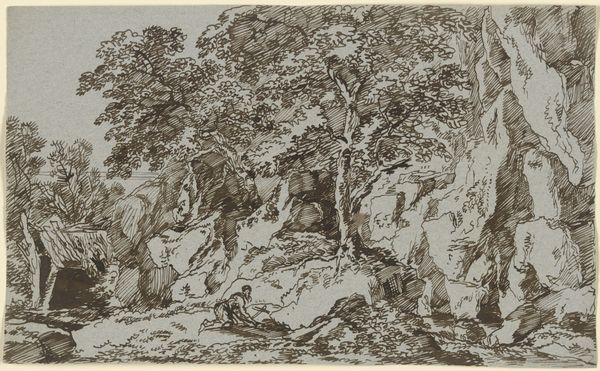
drawing, print, etching
#
drawing
#
ink drawing
#
baroque
#
animal
# print
#
etching
#
landscape
#
pencil drawing
#
genre-painting
Dimensions: 167 mm (height) x 220 mm (width) (bladmaal)
Editor: Here we have "To Greyhounds," an etching and print by Joannes Fijt, created around 1642. There's a frenetic energy to it, almost violent, captured in the dogs' posture and the scratching lines of the etching. What strikes you most about this piece? Curator: The representation of animals in art often serves as a mirror to human society. Consider the baroque period’s emphasis on drama and realism, and the social hierarchy deeply embedded within 17th-century European life. How do you interpret the relationship between humans and animals depicted here? Editor: I suppose the dogs were a status symbol, but their expressions don't look very... elevated? They look wild. Curator: Precisely! Think about hunting in that era—not just a sport, but a display of power. The violence you perceive, the wildness, it challenges a romantic view of the aristocracy. Are we meant to admire the hunt, or question the domination over the natural world? Editor: So you’re saying that what looks like a simple genre painting might actually be a critique of power structures? Curator: Exactly. Fijt uses genre-painting conventions but subtly unsettles them, doesn't he? Who benefits, and at whose expense? We need to also remember class and labor here. Who is cleaning up after these dogs? These moments remind us to read closely and with skepticism. Editor: It's fascinating how much context informs a simple image of dogs! I will remember to think about power relations from now on. Curator: And that's the beauty of art—it opens dialogues across time, inviting us to confront the past and its continuing relevance.
Comments
No comments
Be the first to comment and join the conversation on the ultimate creative platform.
